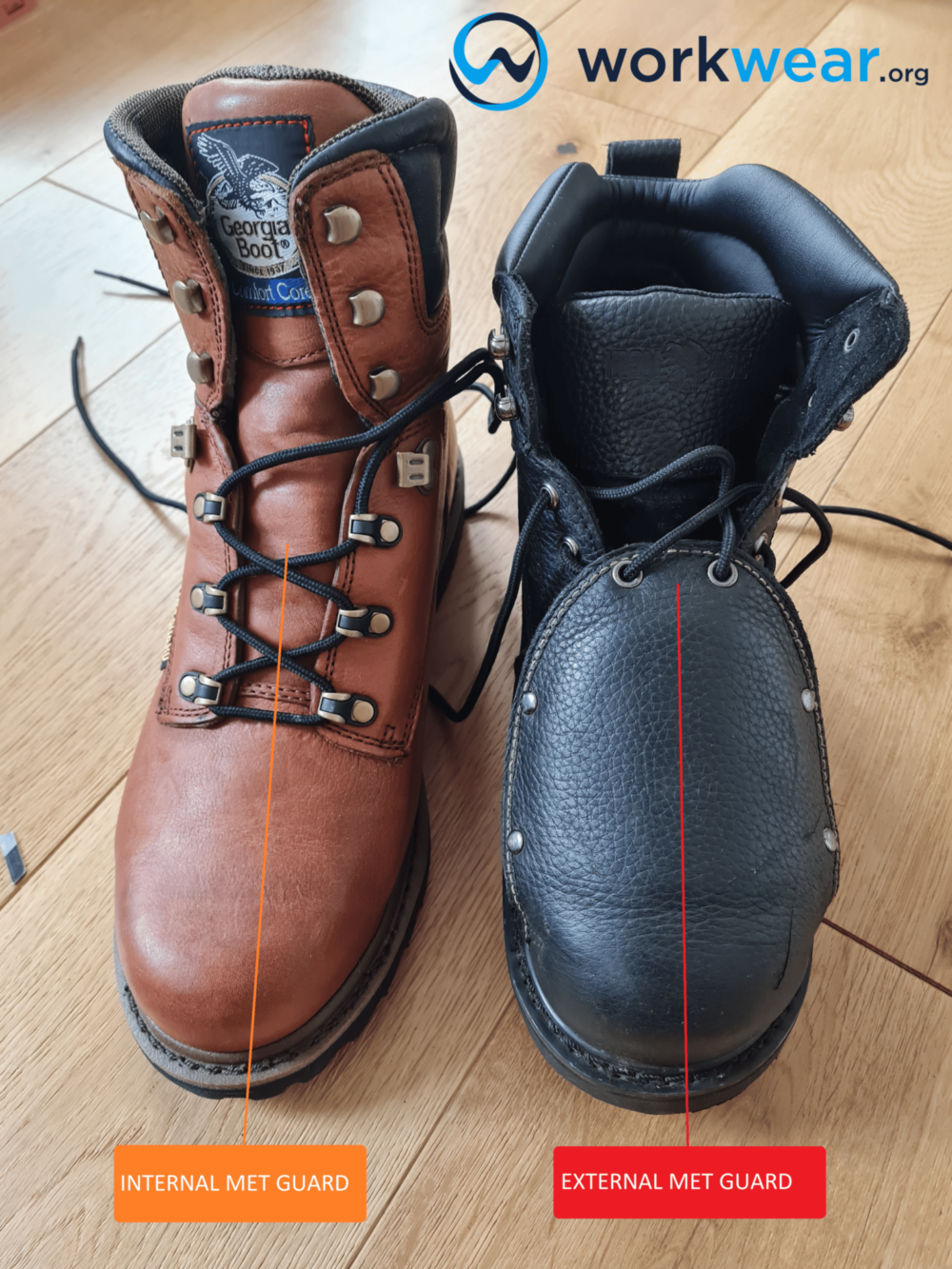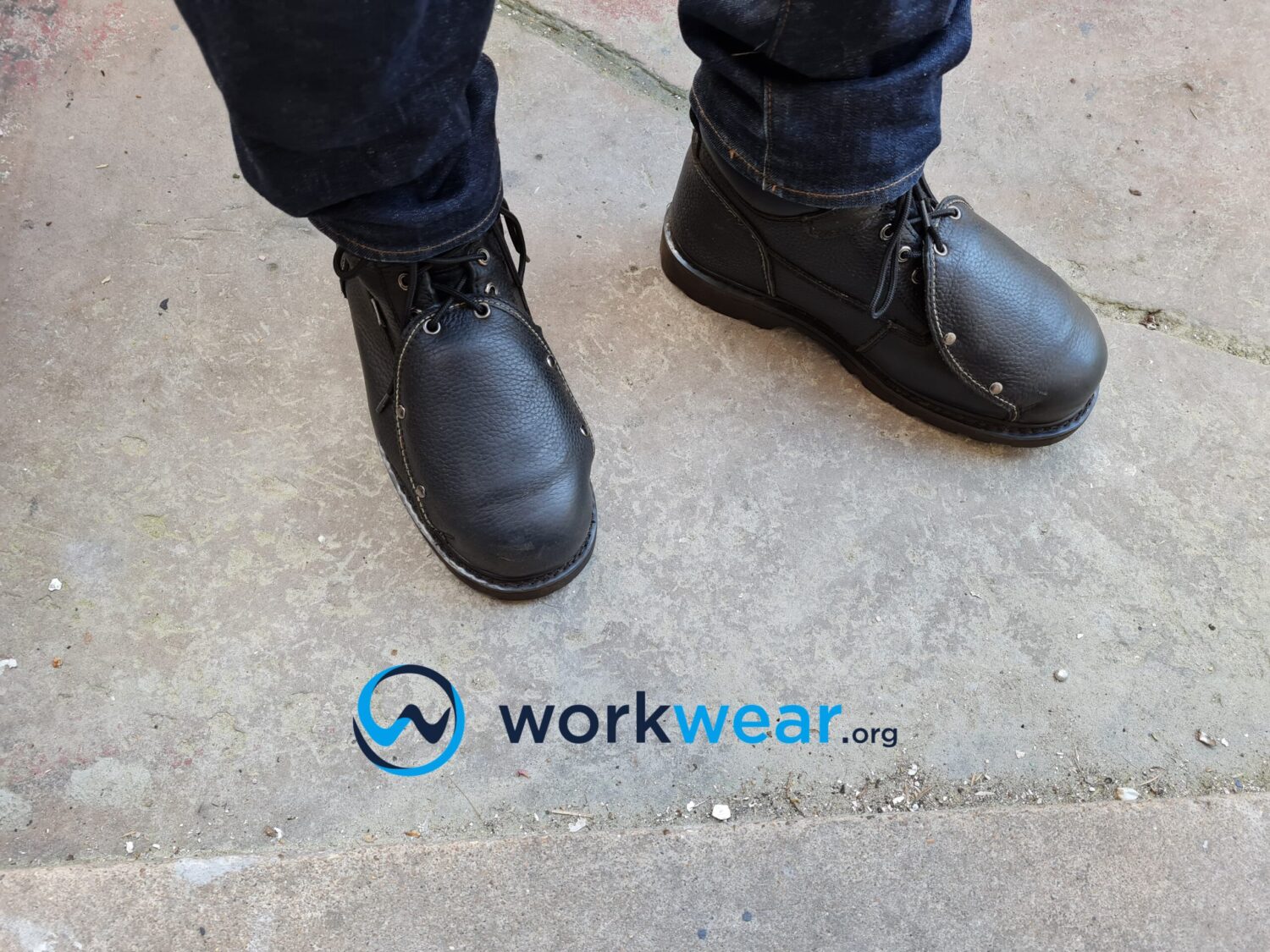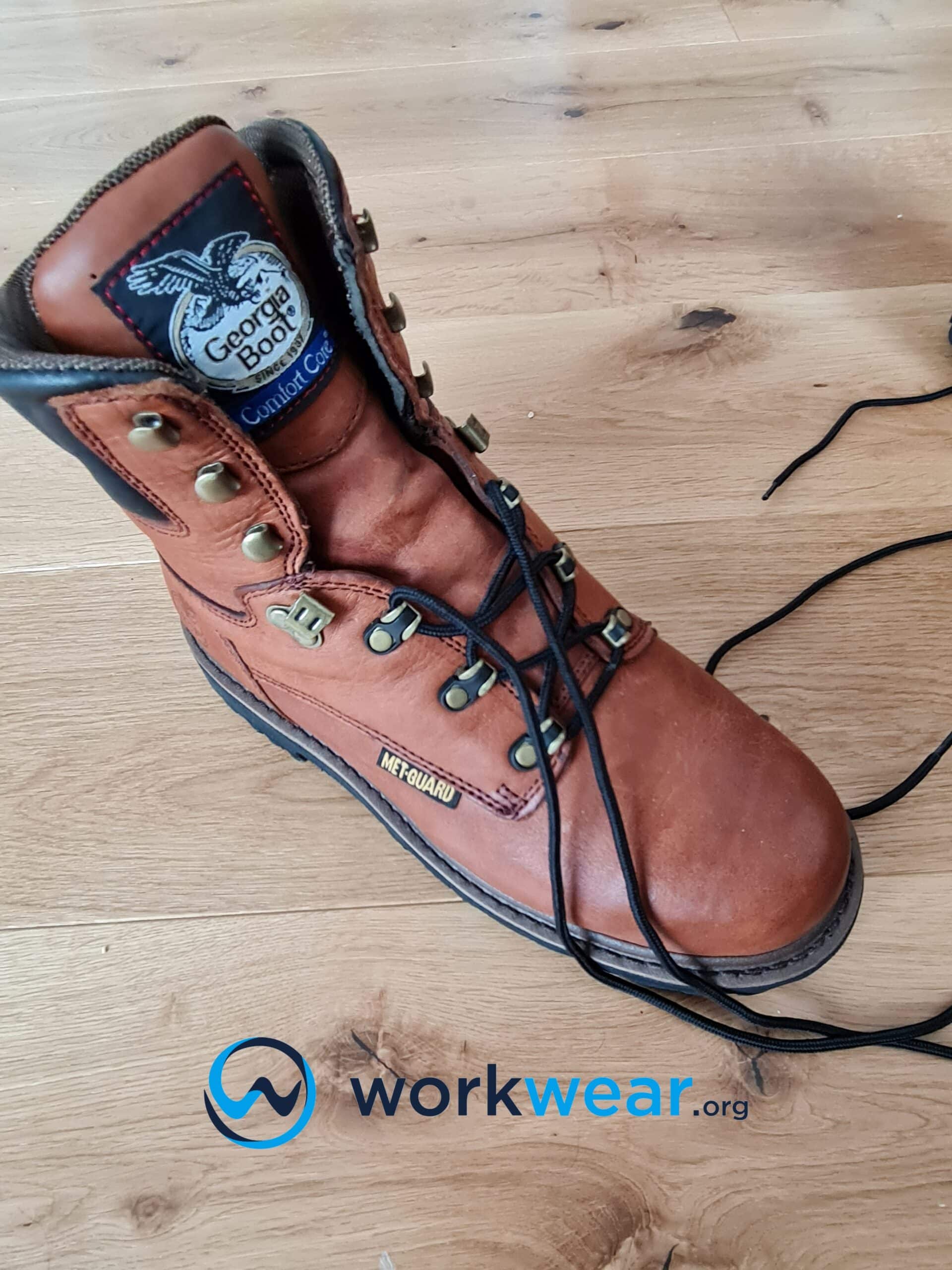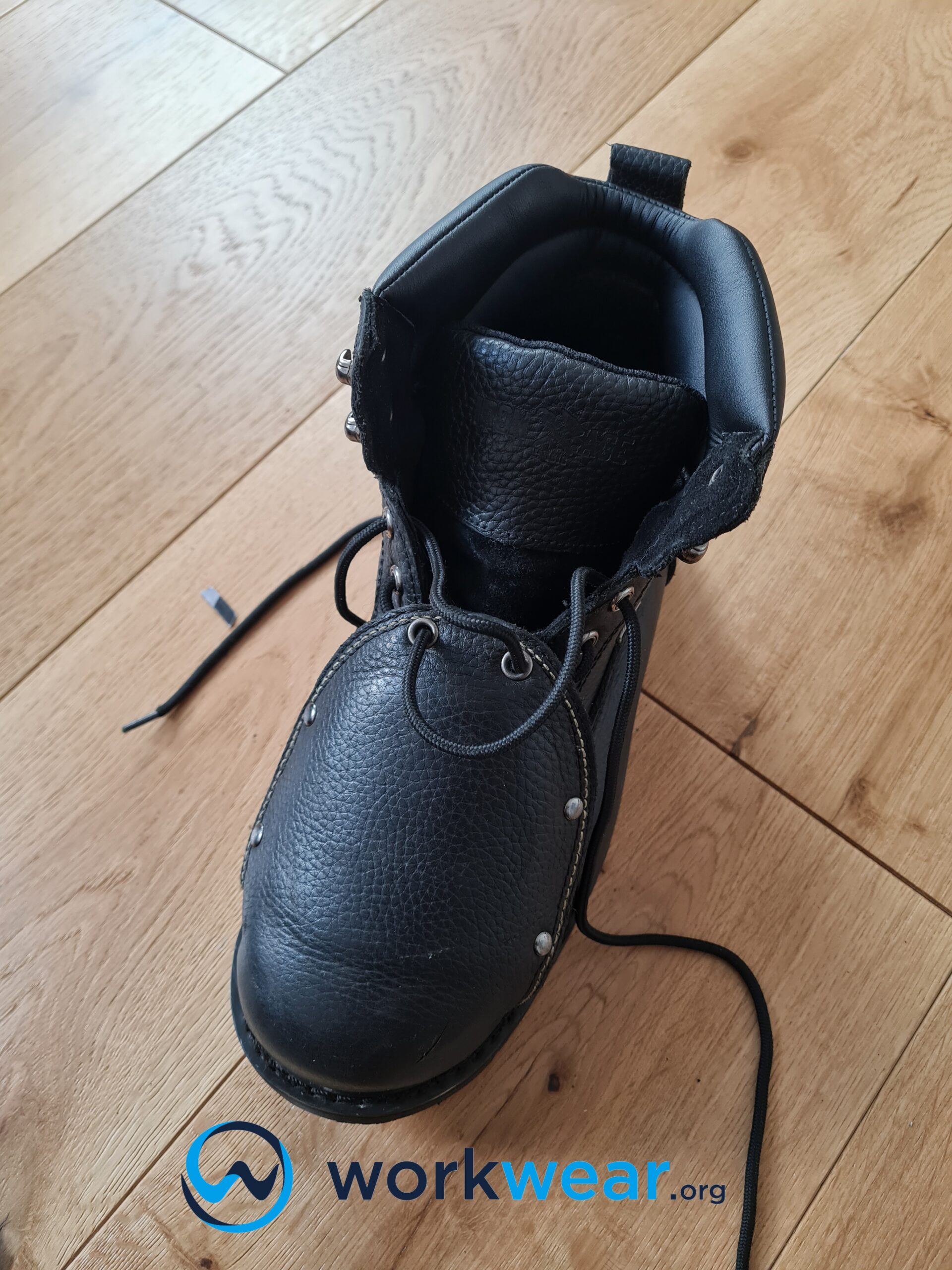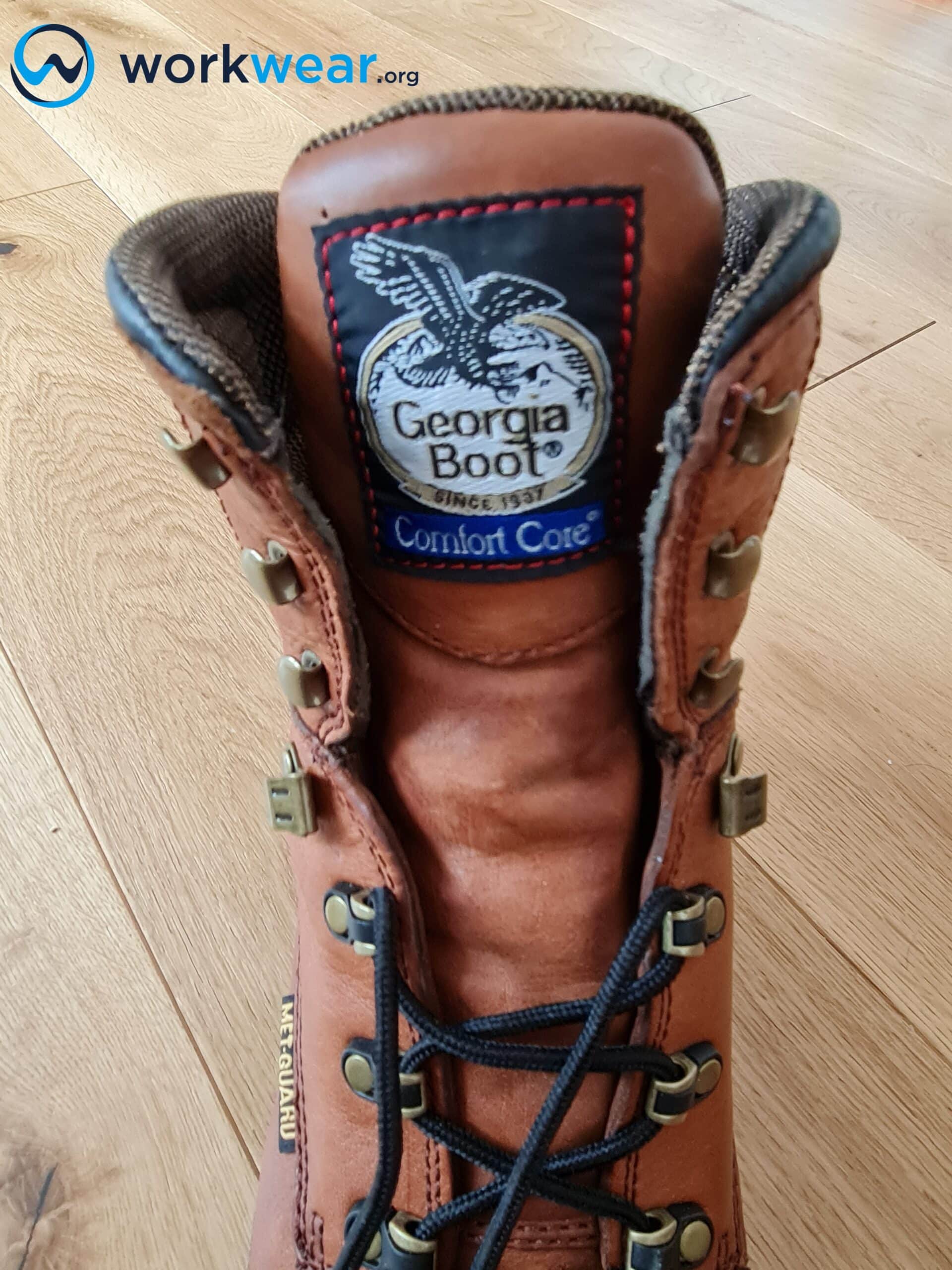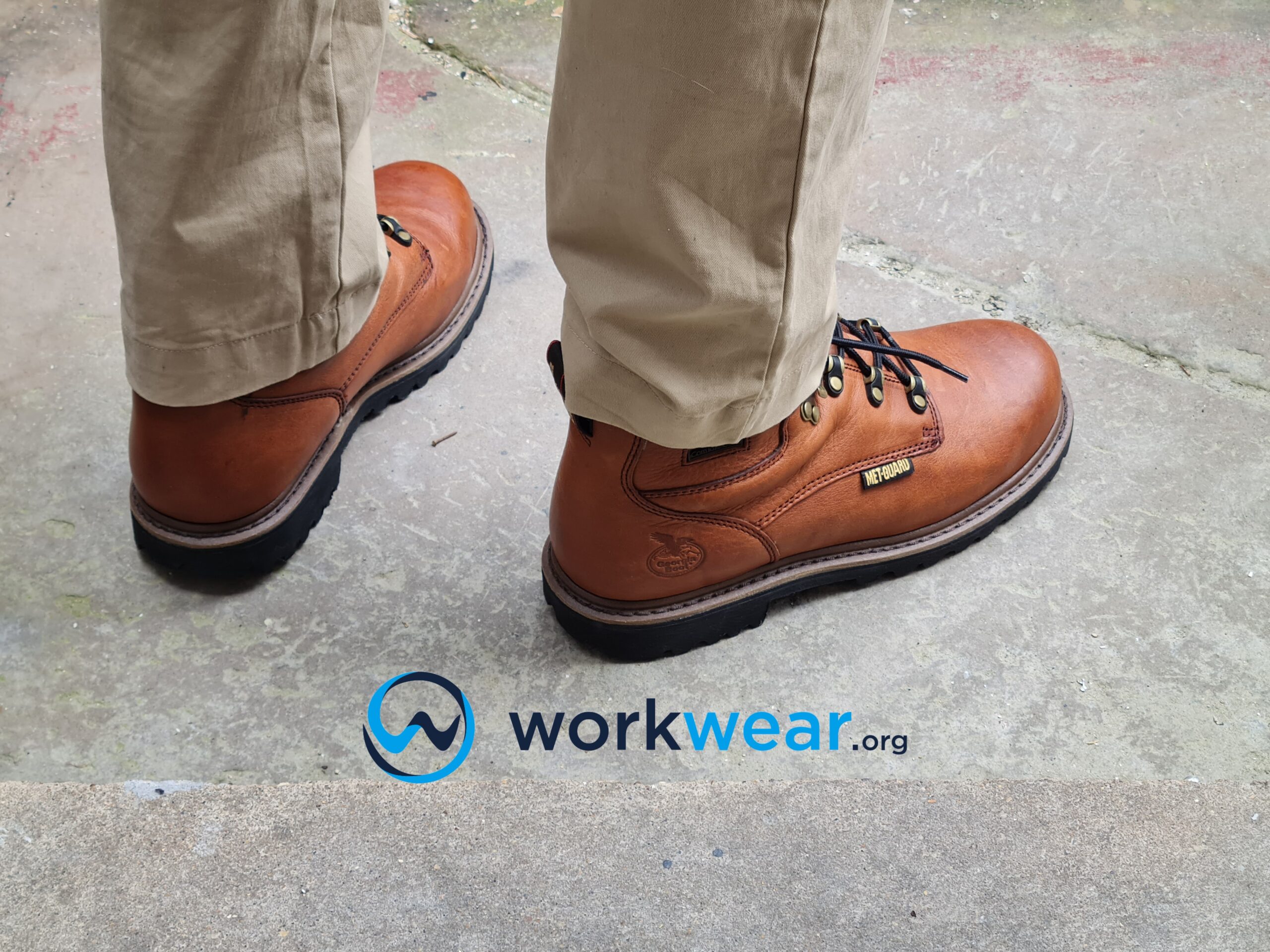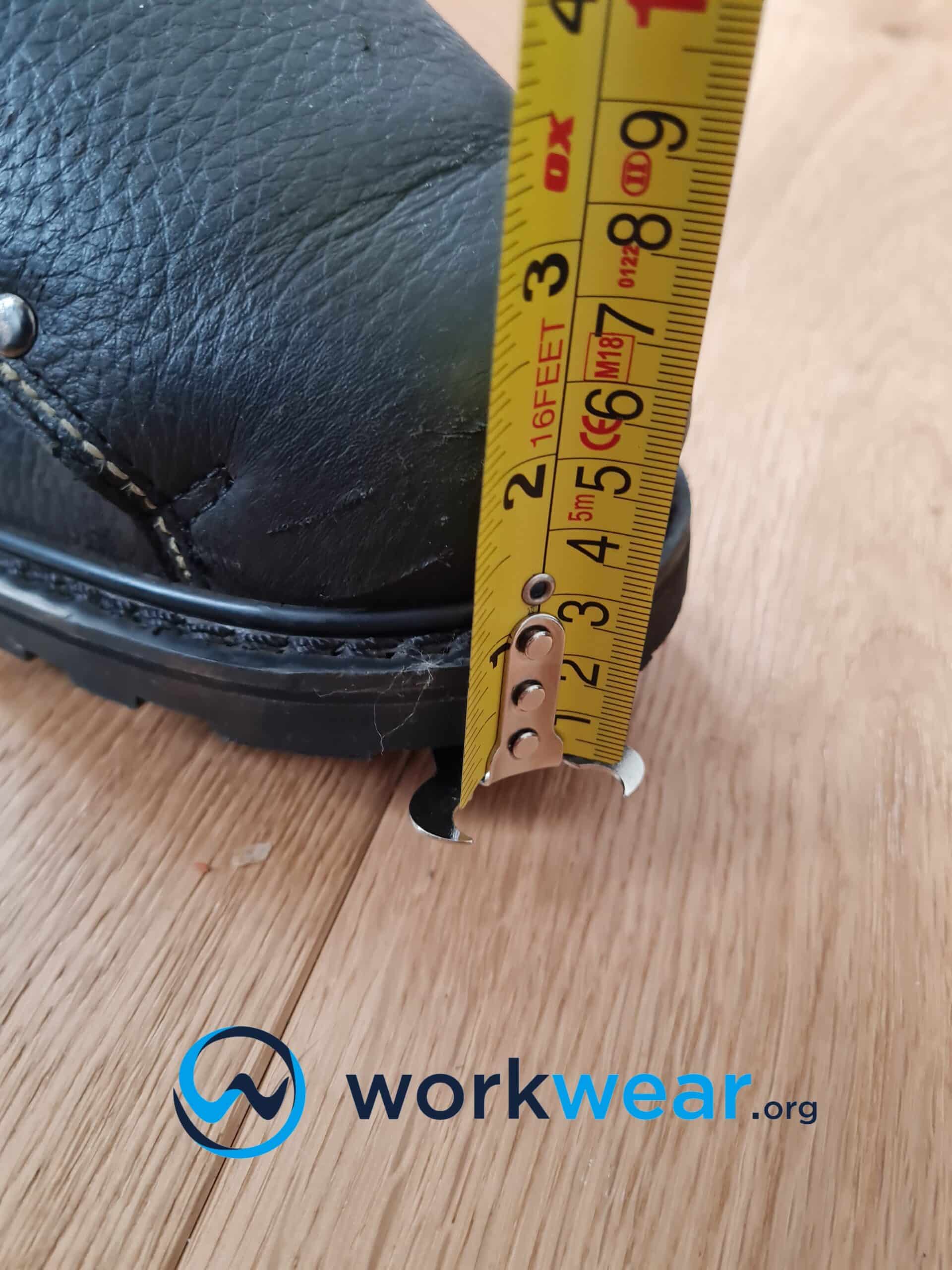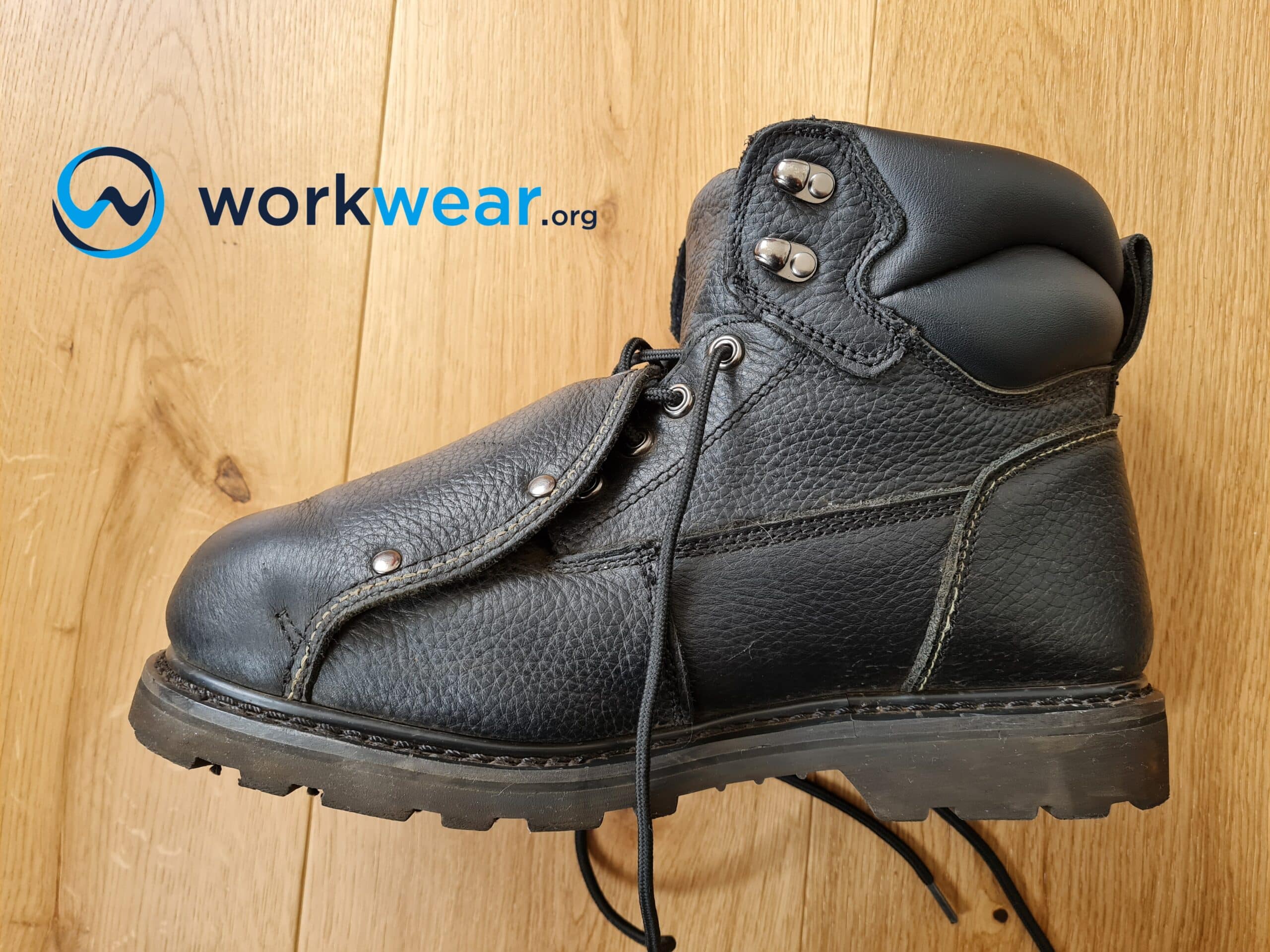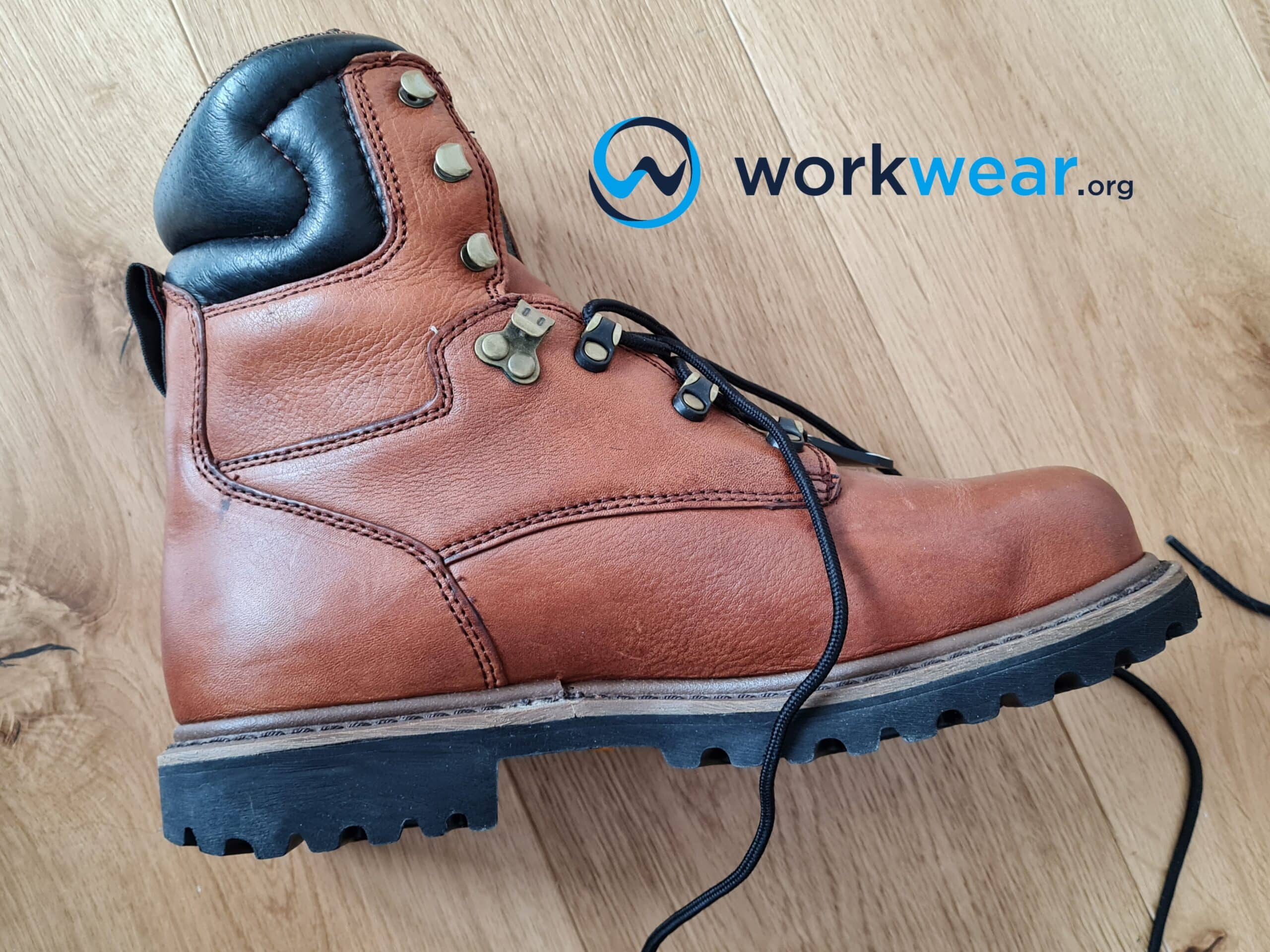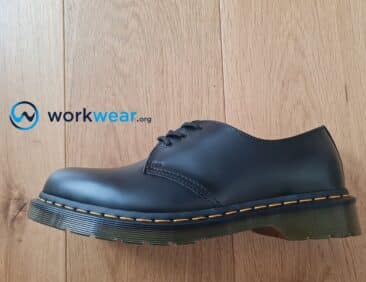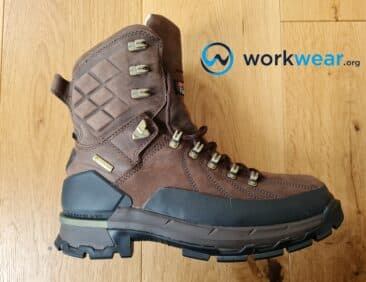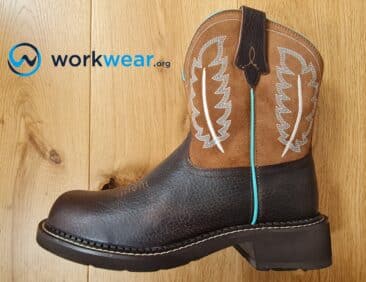Metatarsal Work Boots Explained
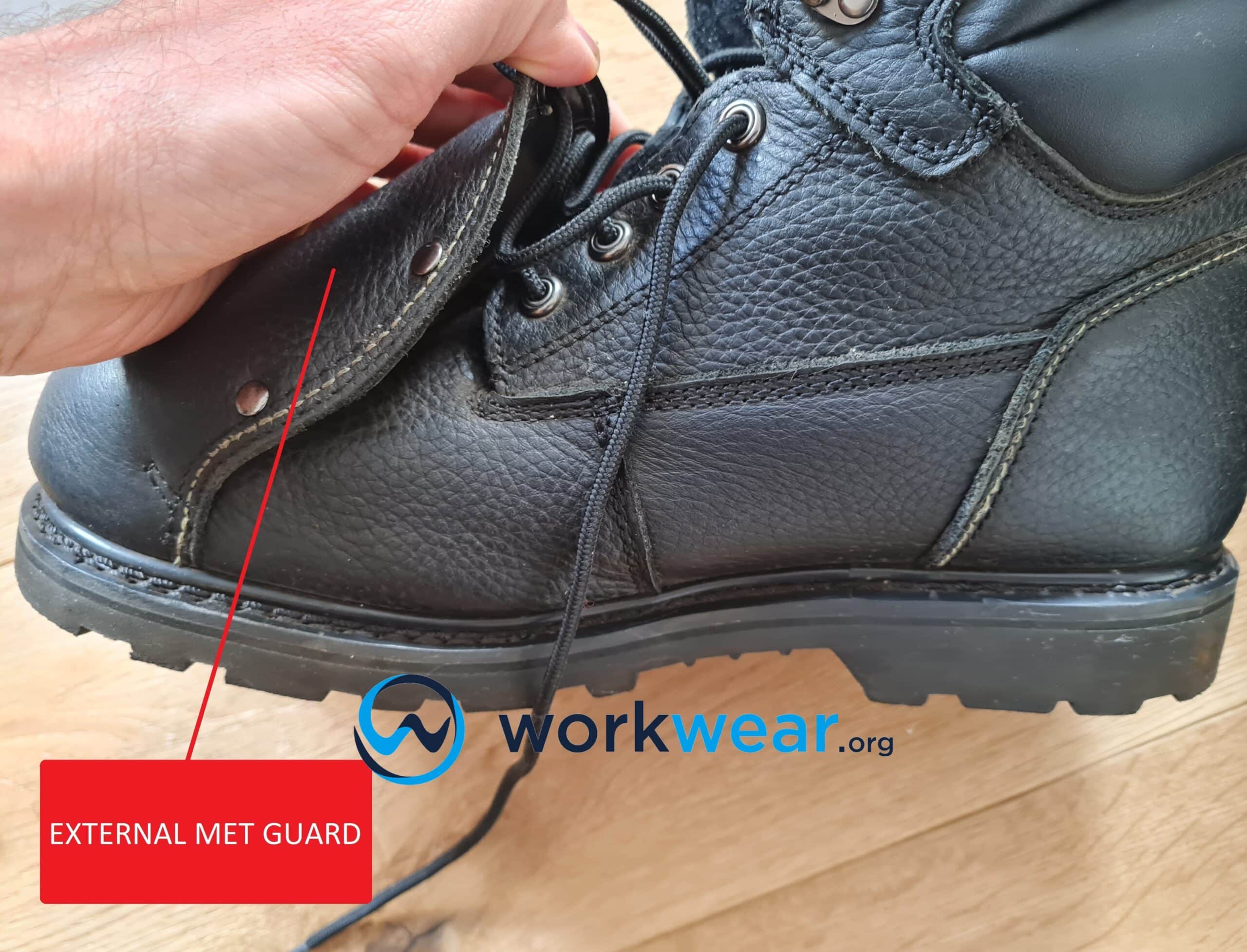
The material used for your work boots will have a dramatic effect on your comfort level for the entire day. When your boots are constructed with materials that are suitable for your needs and working conditions, the footwear can help you maximize your efficiency in the workplace while ensuring your continuous comfort. The materials used for uppers on work boots generally fall into two categories – leather and synthetic materials. Looking at the materials and their distinctive features can help you choose the one that will work best for your requirements so you can be sure that you will get to maximize your footwear investment for long-term use.
Having the correct footwear that corresponds to the specific job setting and tasks is important. This requirement is even more magnified in work conditions that increase the risk of injuries due to exposure to safety hazards, such as objects that can drop on the feet. Safety boots take on the task of protecting the toes against impact and compression threats in hazardous surroundings. However, if extended protection over most of the foot is required, metatarsal work boots may be a better option.
Metatarsal Work Boots – Definition and Purpose
Metatarsal work boots are built with metatarsal guards that deliver extended coverage over a larger area of the foot. While safety toe caps protect the toes, the met guards are designed to shield the metatarsals – the long bones on top of the foot, connecting the toes to the ankle area. The safety barrier helps prevent serious injuries to the top of the foot, especially given that not all large items that can roll or fall will only affect the area protected by the toe caps.
Metatarsal work boots can be fitted externally or internally. Each option has its benefits and drawbacks, and it’s important to determine which metatarsal guard can address specific needs to maximize the work boot choice in hazardous work areas. Choosing an internal or external met guard will also impact the boots’ appearance, which is another thing to remember when choosing botos with metatarsal guards.
Uses of Metatarsal Work Boots
Metatarsal work boots are used in work settings where there are risks of heavy machinery, tools, pieces of equipment, and other items falling or rolling on the feet. They prevent injuries (such as fractures) to the metatarsal area of the foot, which may occur with exposure to impact and compression. Some of the professions that will benefit from metatarsal work boots include:
- Construction workers
- Heavy equipment operators
- Warehouse personnel
- Production line workers
- Transportation and shipping staff
- Maintenance personnel
- Mining project workers
Types of Metatarsal Work Boots
Metatarsal guards can be fitted externally or inside the boots. Read on to see the differences between each type and how they can bring maximum benefits to certain jobs and settings.
External Met Guard Work Boots
As the name suggests, these boots are built with the metatarsal guard positioned outside. The met guard forms a protective shell on the top of the foot, extending from the part where the safety toe cap ends until the top of the ankle bone area. Metatarsal guards used to be fitted only to the outer part of boots, where they offer superior protection against items that can drop or roll over the feet. They’re usually made of a rigid material (such as plastic) that absorbs the impact of heavy falling objects to keep the foot safe.
Advantages
Prevent fractures to the metatarsal bones
External met guards act as protective barriers, keeping the metatarsal bones safe against dangerous impact or compression that can be encountered in different worksites. They often work with safety toe caps to protect most of the top of the foot from getting seriously injured by rolling or falling objects.
Protect the top of the foot (and boot) against dangerous substances
External metatarsal guards are typically positioned on top of the shoelaces. The stiff material underneath is typically covered in leather, protecting the laces and the upper’s material against chemicals, sparks, extreme heat, and other hazardous substances that may accidentally splash or spill on top of the boots. These external met guards also prevent dangerous materials (such as molten metal) from quickly penetrating the upper, keeping the foot safe in case of exposure to such hazards.
Offer extended coverage over the foot
External metatarsal guards often offer a wider coverage compared to internal met guards. These barriers extend over a wider area outside the boot, covering a larger portion to protect the upper and the foot against dangerous compression and impact. An external met guard can also protect the shoelaces from getting damaged by sparks, extreme heat, or harsh chemicals that may accidentally spill on the boot.
Superior protection against sustained impact
Safety boots with external metatarsal guards offer reliable protection against slower impact than those with internal met guards. The external barrier keeps the bones on top of the foot against fractures in case of sustained impact or compression, such as when large wheels roll over the boots.
Disadvantages
Can make boots look weird/unattractive
External metatarsal guard work boots can look strange because of how the protective component is fitted. The met guard looks like a large flap on the shoelaces, giving the boots a futuristic look that may look out of place with certain work attire. Not everyone may appreciate this strange look, even given the external metatarsal guard’s enhanced protection.
Often feel heavier/bulkier than internal met guards
With their location and how they’re designed, external met guards are often heavier compared to the ones placed inside the boots. They may push down over the foot and cause discomfort, especially if the boots are worn for extended periods.
Can be extremely stiff
External metatarsal guards are made with rigid materials that act as shields against heavy falling objects. While they offer superior protection, they can also restrict movement, especially when they dig into the feet instead of adapting to every step.
Can be tripping hazards
External met guards can get caught on the surroundings’ tools, equipment, and other items. As such, they can become tripping hazards, especially when there’s a need to walk quickly in work settings with cramped spaces or where objects are left lying around.
Internal Metatarsal Guard Work Boots
Internal met-guard work boots are equipped with metatarsal guards incorporated into the footwear, just under the lacing system. Since the met guards are discreetly positioned inside, the boots look just like normal work footwear, maintaining their conventional appearance as they don’t have the bulky flap on top. Internal met guards are often made with more flexible materials, so they don’t hamper movement and comfort the way external barriers can.
Advantages
Keep the foot safe against sudden compression and impact
Internal met guards deliver strong protection against sudden impact and compression. They prevent the metatarsal bones from getting crushed by heavy equipment or large objects that can accidentally fall on top of the feet.
Discreet metatarsal protection
Internal met guards can’t be seen from the outside. It’s difficult to determine the difference between a work boot with an internal met guard and one without this safety component by simply looking at the footwear options. With the met guard discreetly tucked inside, the boots maintain a streamlined look, just like other (normal looking) work boots.
More comfortable than external met guards
Internal met guards are often made with flexible materials that move along with the foot’s motion, so work boots with these safety components are easier and more comfortable for walking around. They’re generally more comfortable than external metatarsal guards, which tend to be heavy and stiff. Met guards that are placed inside the boots usually have sufficient padding for enhanced comfort and protection.
Not a tripping hazard
Work boots with metatarsal guards placed inside have the same sleek silhouette as traditional work boots. However, these boots don’t have external components that can accidentally get caught on surrounding items.
Disadvantages
Weaker protection against sustained impact or compression
Internal met guards protect the feet against sudden force but offer weaker protection against slower impact. They typically don’t offer the strong protection that external metatarsal guards provide against sustained compression or impact, such as when heavy machinery slowly rolls over the boot.
Less coverage compared to external metatarsal guards
Generally, internal met guards cover a smaller surface area than external metatarsal guards. The difference may not be that much, but it can make a lot of difference when the dangerous impact falls or rolls over the uncovered area.
Top Notch Metatarsal Work Boots
Here are two top-notch work boots with metatarsal guards – one with the component fitted internally and one with the safety component placed outside.
Iron Age Groundbreaker External Met Guard Boot
This leather work boot is equipped with a steel toe cap to keep the toes safe against crushing injuries in hazardous worksites. Meanwhile, the external met guard provides additional coverage, keeping the top of the foot protected against serious harm in case heavy objects roll or drop onto the boot. The met guard is kept in its secure position with snaps, preventing it from becoming a tripping hazard. The electrical hazard-safe design offers a secondary layer of protection against electrocution in case of accidental exposure to live circuits. The boot features Kevlar stitching that keeps the components’ strong bond throughout the most demanding jobs. The EVA footbed keeps the foot nicely cushioned for enhanced comfort, while a moisture-wicking mesh lining helps maintain a comfortably dry boot interior throughout the day.
Georgia Boot Hammer Internal Metatarsal Guard Steel Toe Boot
This leather work boot is equipped with the exclusive AMTImpact internal met guard to protect the bones on top of the foot from getting crushed by dangerous compression or impact. This soft material doesn’t restrict movement and won’t dig into the foot as rigid materials can, promoting comfortable walking even for long periods. The steel toe component forms a barrier over the toes, keeping them safe against heavy falling or rolling objects. A double-padded collar cushions the ankle and keeps it secured, preventing unwanted ankle rotation while walking over unstable ground conditions. The built-in ventilation system maintains a comfortably cool and dry boot interior. The Comfort Core insole and steel shank work hand-in-hand to deliver maximum cushioning and support for hours.
Comparison Table
| Feature |
Advantages |
Disadvantages |
|---|---|---|
| External Met Guard Work Boots |
|
|
| Internal Met Guard Work Boots |
|
|
Our Testing Experience
We’ve tried two noteworthy metatarsal boots – the Iron Age Groundbreaker Boot (which had an external metatarsal guard) and Georgia Boot Hammer Steel Toe Boot fitted with an internal met guard. Both had heavy-duty designs, although the Georgia Boot option’s internal met guard resulted in a more streamlined silhouette than the Iron Age boot’s bulkier profile. These metatarsal boots are heavier than the average work boots, so they’re not the ideal choice for activities that include staying on your feet (walking or standing) for extended periods. These boots may not be the sleekest or most stylish, but they can undoubtedly be trusted to provide continuous foot safety in harsh work conditions. We loved how these boots shielded larger surface areas over our feet, whether the enhancements were positioned internally or externally in (or on) the boots.
Conclusion
Metatarsal work boots provide superior protection against compression and impact hazards. The protective components work with safety toe caps, forming a barrier over the feet to protect the toes and metatarsal bones from crushing injuries. Metatarsal guards are fitted internally or externally, each option having advantages and weaknesses for specific activities and work settings.
FAQs
- Q: Do all metatarsal work boots have safety toes?
- A: Yes – the safety toe caps work in tandem with the metatarsal guards to keep the top of the foot safe against injuries from compression and impact threats.
- Q: Can external met guards protect against other hazards (aside from compression and impact)?
- A: Yes. External met guards also offer reliable coverage against sparks, chemicals, and even molten metal, so the feet stay safe in case of accidental exposure to these dangerous substances.
- Q: Are internal met guard work boots as comfortable as regular work boots (without metatarsal guards)?
- A: It depends on the material used for the internal met guard. Some, such as the one used in the Georgia Boot Hammer, are soft enough not to cause discomfort. However, some internal metatarsal guards can still feel stiff and may dig into the foot while walking.
- Q: Will leather work boots with metatarsal guards feel more comfortable after the break-in period?
- A: Not always. The leather of work boots with internal met guards isn’t expected to stretch and soften even after a break-in period, so it’s important to ensure that the right size and fit are chosen from the beginning.
